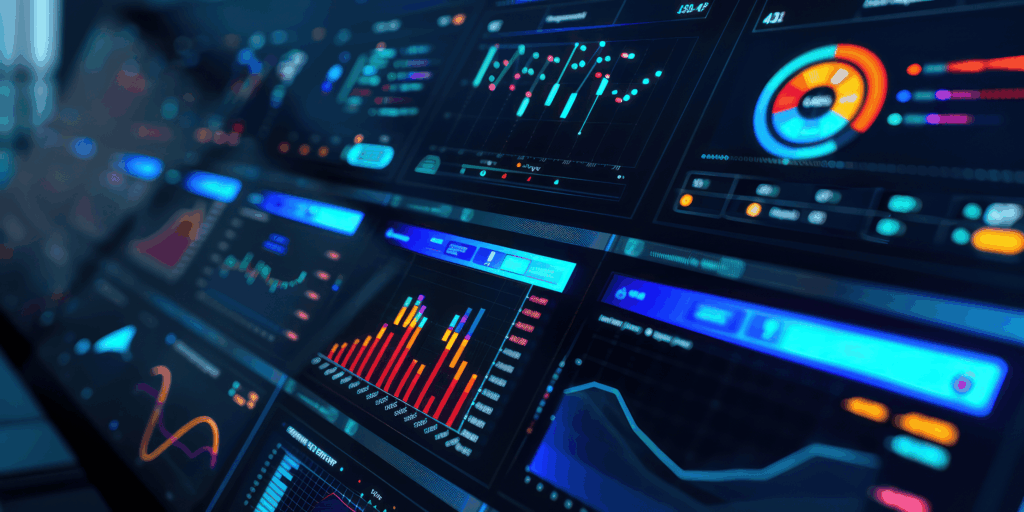Enterprise Asset Management (EAM): Implementation Strategies
How to select the right EAM software, integrate it with ERP systems, and measure ROI across the entire asset lifecycle management process.

TL;DR
Modern EAM systems unite maintenance, finance, and operations under a single digital framework. When executed correctly, EAM implementation can increase asset uptime by 20–30%, reduce maintenance costs by 15–25%, and extend equipment life cycles. This guide explains how to choose the right platform, design an integration roadmap, and evaluate business impact through measurable KPIs.
Highlights
- Strategic integration of EAM software and ERP ensures visibility from asset cost to performance
- Lifecycle management with data-driven maintenance planning reduces downtime and total cost of ownership
- Measurable ROI comes from process standardization, governance, and user adoption — not just technology
Introduction
When BASF unified maintenance operations across its European plants, it wasn’t chasing another digital buzzword. It replaced 12 legacy systems with a single Enterprise Asset Management (EAM) platform integrated directly into SAP ERP. Every pump, reactor, and compressor now reports condition, cost, and service history in one dashboard. Within a year, BASF achieved a 28% improvement in maintenance efficiency and 19% reduction in unplanned downtime, saving several million euros annually.
Yet, most organizations attempting similar programs struggle to reach that level of maturity. According to IDC’s 2024 Industrial Software Report, 54% of EAM projects fail to achieve their expected ROI within two years, mainly due to poor data preparation, integration gaps, and lack of measurable KPIs. The technology is not the problem — implementation discipline is.
Modern EAM software is far more than a maintenance tracker. It’s a strategic framework connecting finance, operations, and reliability through data. Success depends on aligning these systems, standardizing processes, and embedding analytics into daily workflows. This guide outlines the complete EAM implementation lifecycle — from platform selection and ERP integration to performance measurement across the full asset management system.
Why EAM Initiatives Underperform
Enterprise asset management promises unified visibility across maintenance, finance, and operations — yet most EAM implementations fall short. The first problem is fragmentation. Many organizations still run maintenance on standalone systems or spreadsheets while ERP handles procurement and budgeting. This disconnect blocks the asset management system from showing the true cost and condition of assets in real time.
The second issue is data inconsistency. Sites often use different asset hierarchies, naming conventions, or work order categories. When these datasets are merged into an EAM software environment, KPIs lose meaning. A “critical pump” in one region might not match its counterpart elsewhere, making benchmarking impossible.
A third weakness is ROI measurement. Success is often defined by go-live dates rather than business outcomes. According to Deloitte’s 2024 Manufacturing IT Survey, fewer than 35% of enterprises link EAM dashboards directly to KPIs such as mean time between failures (MTBF), maintenance backlog, or total cost of ownership (TCO).
Without a unified framework and data discipline, even top-tier EAM platforms become digital filing cabinets — storing maintenance history instead of driving decisions.
Digital transformation in maintenance isn’t about more data — it’s about making asset data make decisions.
— Dr. Jay Lee, Distinguished Professor, Industrial AI Center
Building a Connected EAM Architecture
Successful EAM implementation isn’t a software project — it’s an organizational integration effort. The companies that achieve measurable ROI treat their EAM software as a digital backbone connecting engineering, finance, and operations. The foundation is a unified architecture built on five principles.
1.Standardize the Data Model
Start by defining a single enterprise asset hierarchy — one taxonomy for all equipment, sites, and cost centers. This ensures consistent asset lifecycle management and allows cross-site performance comparisons.
2.Link EAM to ERP
Direct integration with ERP modules for finance, procurement, and inventory gives full visibility into asset-related costs. APIs or middleware prevent duplication while maintaining traceability between maintenance events and financial transactions.
3.Deploy in Phases
Launch pilots in one business unit or facility before scaling globally. Measure uptime improvement, user adoption, and data accuracy. Organizations that scale only after successful pilots show 30–40% higher user engagement post go-live.
4.Embed Analytics and Predictive Insights
Combine EAM software with IoT telemetry and condition-based data. AI-driven insights detect failure patterns early, linking predictive maintenance directly into work order scheduling.
5.Establish Governance and Change Management
Create an EAM governance board to enforce data standards and performance KPIs. Align user training not just on tool use, but on interpreting asset performance metrics for decision-making.
For organizations seeking a structured approach to asset governance, the PAS55 Asset Management Standard offers a foundational framework. It defines best practices for lifecycle management, performance alignment, and cross-functional accountability — making it a valuable reference for EAM implementation teams.
When these layers operate together, the asset management system evolves from a maintenance record tool into a real-time operational command center.
Watch: The Complete Guide: Enterprise Asset Management (EAM) explains core EAM functions, data capture strategies, and must-have features. It reinforces the five architectural principles outlined in your article and helps readers visualize how a unified EAM system operates across departments.
EAM vs ERP: Complementary Systems, Different Focus
One of the most common misconceptions in digital transformation is that an ERP can replace an EAM system. In reality, the two serve different but interconnected purposes. ERP governs financial and resource transactions; EAM software manages the physical performance, health, and lifecycle of assets. Integration between them closes the gap between cost control and operational reliability.
| Aspect | ERP System | EAM System | Combined Value |
| Primary Focus | Finance, procurement, HR, supply chain | Maintenance, reliability, asset health | End-to-end asset visibility |
| Data Type | Transactional (costs, budgets, inventory) | Operational (condition, failures, work orders) | Unified performance-cost reporting |
| Work Order Management | Basic scheduling & approvals | Detailed execution, mobile workflows, analytics | Streamlined maintenance cycles |
| Asset Lifecycle Management | Tracks depreciation & ownership | Monitors condition & lifecycle stages | Strategic replacement planning |
When ERP ensures fiscal discipline and EAM software delivers operational intelligence, enterprises gain a full picture of asset performance — not just how much it costs, but how well it performs. The integration of both creates the foundation for measurable ROI and sustainable efficiency.
Real Implementation Case
ABB: Scaling EAM Across Global Operations

Challenge: ABB operated more than 40 manufacturing sites, each using different maintenance systems and asset taxonomies. Fragmented data prevented visibility into asset reliability or lifecycle cost. Maintenance costs were rising by 8% annually despite heavy investment in digital tools.
Approach: ABB implemented a unified EAM program using IBM Maximo integrated with SAP ERP, starting with pilot sites in Finland, Germany, and India. Over 300,000 asset records were standardized per ISO 14224. Governance and predictive analytics enabled consistent work order management and data-driven insights. After validation, the solution was rolled out globally in phases.


Results:
Maintenance cost reduction: 25% over two years
Equipment uptime improvement: +18%
Average ROI: 16 months
User adoption rate: 92% across 40 sites
Key lesson: Prioritize integration before automation — ABB’s alignment of ERP, finance, and operations data laid a solid foundation that helped avoid the common pitfalls of fragmented EAM implementations.

From Strategy to Scalable Deployment
Rolling out EAM software across an enterprise requires alignment between data, systems, and people. The roadmap below illustrates a five-phase framework used by global organizations to minimize risk and maximize ROI.
| Phase | Objectives | Key Actions | Deliverables |
| 1. Discovery & Assessment | Define business goals and current maturity | Audit asset base, map ERP connections, identify integration gaps | EAM vision, baseline KPI set |
| 2. Data & Integration Design | Build the unified data model | Standardize asset hierarchy, design ERP–EAM interfaces, define APIs | Data architecture blueprint |
| 3. Pilot Implementation | Test and validate on limited scope | Deploy EAM system at one site, configure work order management, train users | Working pilot, feedback metrics |
| 4. Enterprise Rollout | Scale and standardize | Migrate data, deploy globally, enforce governance and approval workflows | Full operational EAM platform |
| 5. Performance Optimization | Measure and sustain value | Track MTBF, downtime, and TCO; integrate asset lifecycle management analytics | ROI dashboard, continuous improvement plan |
Organizations that follow phased EAM deployment typically achieve 20–30% faster adoption and 40% fewer integration issues compared with single-phase rollouts.
Pitfalls and Best Practices
Even advanced EAM software can fail to deliver results if deployed without clear governance or data discipline. These are the most common pitfalls — and how leading enterprises avoid them.
1. Treating EAM as a Software Installation
- Pitfall: Implementation is led by IT without involving operations or finance.
- Best Practice: Manage it as an enterprise transformation project. Establish joint ownership across maintenance, finance, and digital teams.
2. Poor Data Hygiene
- Pitfall: Legacy asset records are incomplete or inconsistent, corrupting analytics and KPIs.
- Best Practice: Conduct a data cleansing phase before migration. Standardize naming conventions and asset hierarchies across sites.
3. Weak ERP Integration
- Pitfall: Running EAM systems independently from ERP leads to disconnected cost tracking.
- Best Practice: Use API-based connectors or middleware to synchronize financial, inventory, and work order data.
4. Overcustomization
- Pitfall: Excessive tailoring of workflows and dashboards inflates maintenance and upgrade costs.
- Best Practice: Follow a configure-not-customize rule — 80% of use cases should rely on standard features.
5. Neglecting User Adoption
- Pitfall: Teams are trained on the interface, not on decision-making using EAM data.
- Best Practice: Create role-specific training and performance incentives tied to asset KPIs and reliability metrics.
Sustainable EAM implementation depends on balance: disciplined governance, standardized processes, and real-time feedback loops connecting system performance with business outcomes.
Key Insights
- Integration determines ROI. EAM software delivers full value only when tightly linked with ERP, financial, and operational systems — bridging the gap between cost and performance.
- Data governance drives reliability. A clean, unified asset hierarchy and consistent work order management process transform the asset management system into a trusted operational record.
- Lifecycle visibility creates strategy. Embedding asset lifecycle management analytics into everyday workflows enables predictive planning, accurate budgeting, and measurable efficiency gains.
These principles turn EAM from a maintenance utility into a strategic enabler — connecting business planning, engineering, and finance through one intelligent framework.
Related Resources
How to Choose a Web Development Company in the USA — and Why the Market Is Evolving Faster Than Ever
Assess who can integrate EAM with ERP, implement secure APIs and deployment pipelines, and support measurement of EAM effectiveness and ROI.
Condition-Based Monitoring: Technologies and Best Practices 2026
Learn how to implement CBM strategies, select key monitoring parameters, and integrate with existing maintenance systems.
CMMS Software Selection Guide: Choosing the Right System in 2026
Compare top CMMS platforms and learn how to select a system that aligns with your maintenance strategy and enterprise architecture.
Conclusion
Enterprise Asset Management has become the foundation of operational resilience. The difference between success and stagnation no longer depends on selecting the flashiest EAM software, but on how effectively it is integrated, governed, and adopted across the enterprise.
A mature asset management system connects every layer of an organization — from field maintenance to financial forecasting. It enables leaders to see not only what each asset costs, but how it performs, degrades, and contributes to long-term value. When implemented with disciplined data standards and ERP integration, enterprises typically achieve 15–25% lower maintenance costs and up to 30% higher asset uptime within the first two years.
The next evolution of EAM implementation lies in intelligent automation: predictive analytics, digital twins, and AI-driven lifecycle planning. As these capabilities mature, EAM will shift from managing assets reactively to orchestrating them proactively — where every decision is informed, automated, and strategically aligned with business performance.